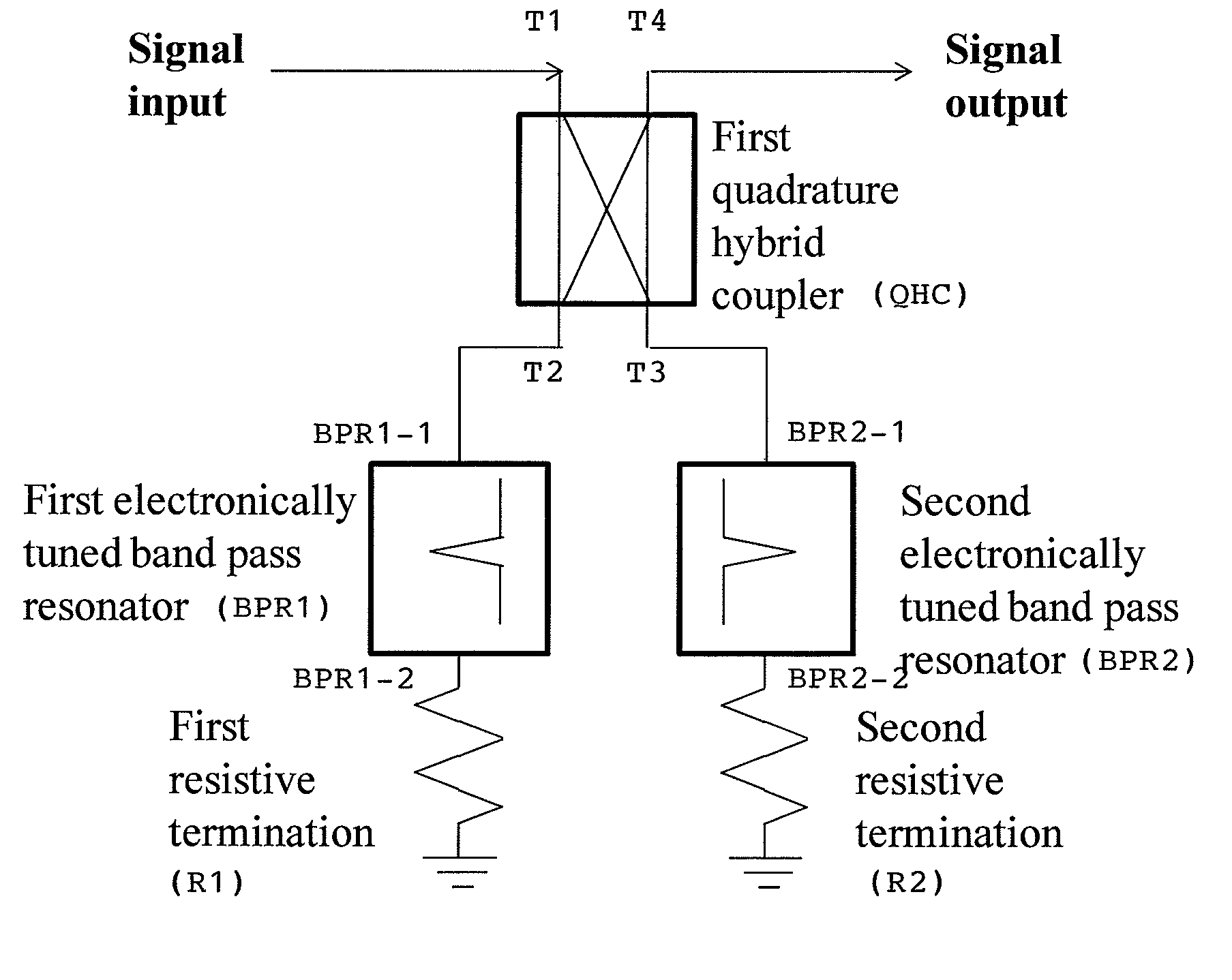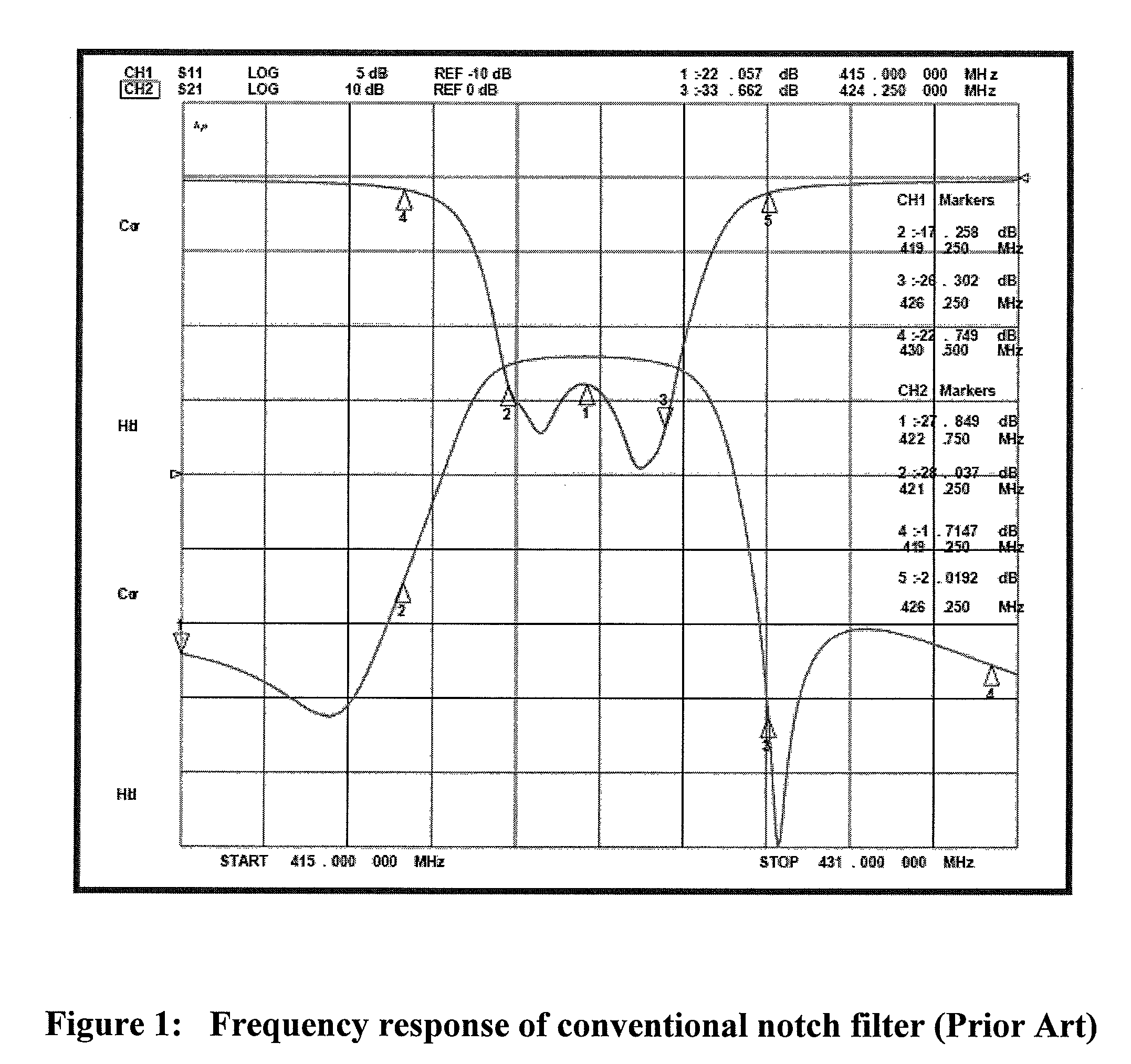Electronically tunable, absorptive, low-loss notch filter
a notch filter, electromagnetic technology, applied in filters, multiple-port networks, electric devices, etc., can solve the problems of physical damage to the transmitter, difficulty in adjusting the notch filter, and the near-by wireless transmitter tends to overwhelm the adjacent receiver, so as to improve power handling, reduce cost, and reduce loss.
- Summary
- Abstract
- Description
- Claims
- Application Information
AI Technical Summary
Benefits of technology
Problems solved by technology
Method used
Image
Examples
Embodiment Construction
[0031]A preferred embodiment of an electronically tunable, absorptive, low-loss notch filter is illustrated schematically in FIGS. 2 and 3. Referring to FIG. 2, a quadrature hybrid coupler QHC has a first terminal T1 for receiving a signal input, a second terminal T2 for one of equal-amplitude 90 degrees out-of-phase tandem outgoing signals converted and passed from the quadrature hybrid coupler, a third terminal T3 for the other of the equal-amplitude 90 degrees out-of-phase tandem outgoing signals, and a fourth terminal T4 for outputting a signal output. A first electronically tuned band pass resonator BPR1 has a first terminal BRP1-1 connected to the second terminal T2 of the quadrature hybrid coupler QHC, and a second terminal BPR1-2 connected to the high side of a first resistive termination R1 which has an impedance matched to the impedance of the notch filter (typically 50 ohms). A second electronically tuned band pass resonator BPR2 has a first terminal BRP2-1 connected to t...
PUM
 Login to View More
Login to View More Abstract
Description
Claims
Application Information
 Login to View More
Login to View More - R&D
- Intellectual Property
- Life Sciences
- Materials
- Tech Scout
- Unparalleled Data Quality
- Higher Quality Content
- 60% Fewer Hallucinations
Browse by: Latest US Patents, China's latest patents, Technical Efficacy Thesaurus, Application Domain, Technology Topic, Popular Technical Reports.
© 2025 PatSnap. All rights reserved.Legal|Privacy policy|Modern Slavery Act Transparency Statement|Sitemap|About US| Contact US: help@patsnap.com



